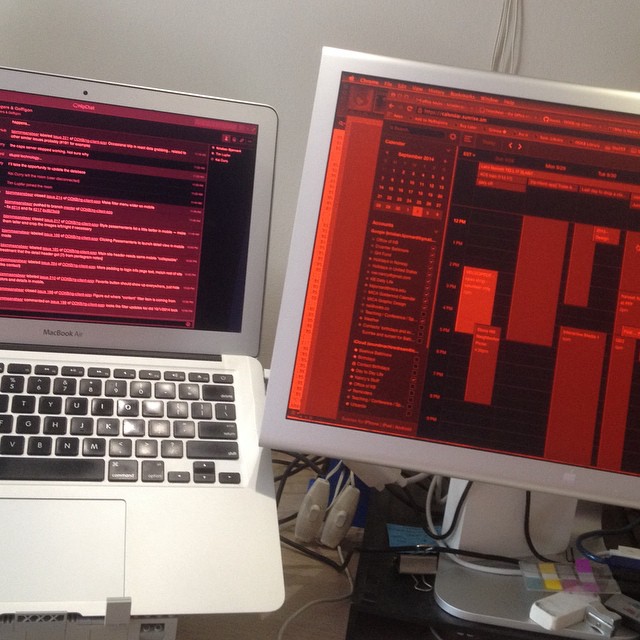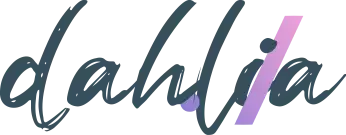
f.lux – Powerful Scheduled Blue Light Filter and Effects Suite
f.lux, or “flux”, is a little program created originally by Michael and Lorna Herf with the intention to combat that blue tinge that comes with screens on electronic devices. Most operating systems, whether that be Windows, Android, or iOS, have a “night light” (or something with a similar name) mode that adds a yellow filter on top of your screen to cancel out the slight blue color that is transmitted naturally from these screens. f.lux does this, but in a much more expansive and useful manner.
Why Blue Light Can Be Bad and How You Can Reduce Eye Strain
One of blue light’s most prominent effects is poor sleep quality (hence, “night mode” or “night light”). Studies have shown that being on your phone or computer in the time before bed has an effect on how well you can fall asleep, screwing with your circadian rhythm – the rhythm that manages your sleep cycle. Sleep deprivation can ultimately cause other unintended ill effects, such as the inability to focus and concentrate throughout the day, mood swings, and fatigue.
Blue light can also increase the risk for eye diseases such as myopia, hyperopia, and astigmatism. These are caused by stress on the eye, which can mold your eyeball to make it malformed, detrimental to your ability to see. Dry, irritated, and itchy eyes can also occur, depending on multiple factors. Other consequences blue light can impose are certain cancers, depression, heart disease, and obesity. While the chance of these diseases and conditions happening is low if you moderate the amount of time you spend on your devices and live a healthy lifestyle, it is best to play it safe.
Conversely, yellow light can be good to relieve eye strain. Some studies have proven that yellow light can help filter out blue light, as it is a color that directly contrasts blue. Having a yellow screen filter or wearing glasses with a yellow tint on them can help neutralize the effect the color of your screen has on your mind and body. It has also been found that high-contrast black text on light-colored backgrounds are easy on the eyes, and less likely to strain them.
Of course, the best way to reduce eye strain is to cut the amount of time you spend on devices with screens and go outside once in a while. Personally, I also follow the 20-20-20 rule– every 20 minutes, look at something 20 feet away for 20 seconds. My eyes feel a lot better when I’m working later at night after taking a look outside the window at intervals. However, for people who have to work a lot or have some obligation that requires them to be on a device that transmits blue light late at night, f.lux is a great piece of software that can help with keeping your eye health under control.
How f.lux Comes Into Play
f.lux is available for Windows, macOS, Linux, iOS, and Android devices. Please note that for iOS, you will have to jailbreak your device and download the application from an alternate store. For Android, you will have to root your phone. Also note that compatibility is not at all guaranteed.

Once you install the application, you will be greeted by an icon in the application tray in Windows, or the top bar in macOS. If location access is allowed, f.lux will automatically take the sunrise and sunset times in your area to calculate the times at which the filter should change color (You can also set your location manually if this doesn’t work). As the sun sets, it should gradually change to a deeper shade of yellow, or a less intense hue once the sun comes up. You can change the intervals at which the application will shift the filter as well as the colors themselves to suit your need. To do this, click on a place on the graph, and sliders will pop up, where you will be able to change the intensities. The time at which they change is dependent on your wake time, so try to set that to an accurate figure.
Color Presets

Although I use custom colors, f.lux has a lot of presets if you aren’t sure on what settings you should use or if you just want to quickly set up the program.


f.lux will also adjust itself based on your wake time, which can be set in the bottom left corner of the application. Once you Periodically, it will also send notifications telling you that you will be will be waking up in a certain time, in the case that you are so distracted, you lose track of time. From my experience, they appear every 30 minutes from 9 hours before I wake up.
f.lux also has different presets for color ranges as well, with warmth options from 1200K to 6500K and descriptors for each setting comparing it to a color of real-world light. Setting the warmth to 6500K will remove the filter on your screen, as it represents true white on an RGB computer monitor. Between 6500K to 7500K is approximately the warmth of daylight. Partially cloudy and overcast days sit around the 8000K range, and as you go higher to 10000K, you get closer to the color of a completely clear sky.
Under the “Effects & extra colors” tab, there are a few more special colors that you can choose from.
- Soft white, which is- well- a soft white.
- Blue sky, which applies a blue filter to your screen.
- Macular pigment, a lighter yellow color.
- Emerald city, a lime-green filter.
- Himalayan salt lamp, a slightly more intense pink filter.
- Civil twilight, a darker blue filter meant to replicate the skylight between dawn/sunrise and dusk/sunset.
Maybe you can’t instantly relate to some of the measurements- in which case, it is a good idea to play around for a while and see what fits you.
Effects

f.lux also offers a large range of effects, which are fun to play with but can also be good in certain situations. Not all of these are based off of different intensities of yellow being applied, or even just color filters being applied. Some of these are only available on certain operating systems- I have all of these on my Windows desktop but only Movie and Darkroom on my Mac.
- Movie mode, which is timed and lasts for 2.5 hours, or 150 minutes. According to the f.lux FAQ, movie mode is meant to “preserve sky colors and shadow detail, while still providing a warmer color tone.” I didn’t see much of a difference when applying it, but it can vary depending on the task you’re doing or the movie you’re watching. Ideally, a good amount of outside scenery-like video is good to test this mode.
- Darkroom mode, which inverts all colors and turns them red. Darkroom mode was designed to be used when developing film, creating a very small amount of light as to not interfere with anything else. Some people also claim it is good for sufferers of photophobia, or light sensitivity. Exclusively emitting red light, darkroom mode is good to use at night to lessen eye strain, as reported by some users.
- Vignette mode, which applies a vignette effect on your screen, lowering the brightness of the corners of your screen and focusing the highest amount of brightness towards the middle of your screen. According to the changelog for version 4.25, vignette mode shows 60% less light than usual. Vignette mode was only applied to my main monitor when selected.
- Grayscale mode, which turns all colors on your display to a shade of gray. This can be a great tool for colorblind or visually impaired users by making the contrast consistent and easier to read, depending on what sort of impairment they have.
There is also an option to Use dark mode at sunset, which will turn on the operating system’s dark theme switch, if applicable. This option is available on Windows and macOS. I am not sure whether it is available on Android and iOS, although both do have dark modes.
Final Verdict
I think that f.lux is a must-have for a lot of people, especially if you spend a substantial amount of time on your computer at nighttime. In the time of COVID-19, I have seen myself work on my computer and use my phone later at night. f.lux is just an amazing utility that goes beyond what some OSs’ built-in night mode function does. It has a great amount of color presets and functions that I can see a lot of people using. While it is a great tool for a lot of people, the best way to reduce strain on your eyes and body is to just take a rest once in a while, and step away from your computer.
Sources:
https://www.webmd.com/eye-health/blue-light-health
https://justgetflux.com
